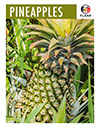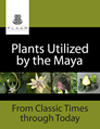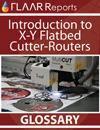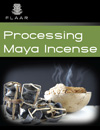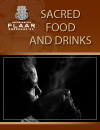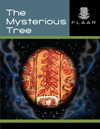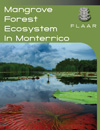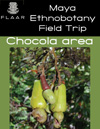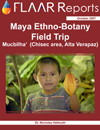All my initial interest in Mayan civilization was architecture. Later I went into iconography and cosmology, but for the first decade I was into palaces, temples, pyramids, and ballcourts. During half a century of photography FLAAR now has one of the dozen largest archives of monumental architecture of pre-Columbian civilizations of Mexico, Guatemala, Belize, Guatemala, and Honduras.
We are now working to raise funding to find all the 35mm Leica, medium format Hasselblad negatives and color slides, 4x5” and 8x10” transparencies to group together to create a focused pre-Columbian reference collection for pre-Columbian monumental architecture of the core area of Mesoamerica. With a donation from a foundation, corporation, or individual, they can suggest where the decades of palace, temple and pyramid photographs should be sent (the archive makes more sense in a museum or a university than in storage).
Our archive covers primarily Maya buildings but also includes pyramids, palaces, courtyards and plazas of Monte Alban, Mitla, Tula, Teotihuacan, Xochicalco, El Tajin, etc.
Separate is a digital photography archive on domestic house architecture
Our archive of pyramids, temples, and palaces is 90% from 1965 to 1998. After that I stopped using Leica and Hasselblad and moved to digital cameras. Our photo archive on Mayan house architecture is all digital and is a separate archive. The Carnegie Institution of Washington has a great collection of photographs from 1920’s-1940’s of Mayan house architecture of much of the Mayan areas of Mesoamerica. We focus on Guatemala and at a high-resolution quality. We focus on areas and cultures not photographed by CIW and thus not included in Robert Wauchope’s helpful 1938 book on house architecture, Modern Maya Houses. We coordinate visits with the local village and with the local families. We hike whatever distance it takes to reach remote areas that CIW and university teams have not photographed previously.
We are not interested in MODERN anything; we seek, find, ask permission of the home owner, and study traditional Mayan house architecture that uses a row of vertical poles for walls (no modern sawn lumber). We are especially motivated to find these houses with thatch of plants other than corozo or guano; roof thatch materials that are nowhere pictured in Wauchope’s book. But the present web page is on our photographic archive of monumental stone architecture of pre-Hispanic centuries.
Coverage of the FLAAR Photo Archive
of Pre-Columbian Architecture
We have visited so many Maya sites there is not space on a web page so list them all. Here are the major ones:
| Yaxchilan Bonampak | Piedras Negras (1970’s-1980’s) |
| Palenque, Comalcalco, Tonina | Tikal, Uaxactun, Nakum, Yaxha, Topoxte Island, Tzikin Tzakan, Ceibal (Seibal) |
| Calakmul (but mainly stelae), Coba, Tz'ibanche (Dzibanche), Kohunlich, etc. | |
| Iximche, Mixco Viejo, Zaculeu and other Post Classic Highland Maya sites | |
| Ake, Dzibilchaltun, Oxkintok, Edzna, Tulum, etc. | Chichen Itza, Uxmal, Labna, Sayil and dozens more Puuc sites. |
| Iximche, Mixco Viejo, Zaculeu and other Post Classic Highland Maya sites | |
| Dozens of Chenes sites, including sites rarely visited or photographed previously. | Dozens of Rio Bec sites, including remote ones. |
| Altun Ha, Xunantunich and probably also Lamanai and Lubaantun | And lots of other Maya sites, potentially even Tazumal in El Salvador (almost half a century ago). |
We do not have photographs of architecture of Naranjo, Peten, since our field trips were with small tour groups and we learned there was no easy access to Naranjo in those decades. Before bringing any tour group we visited a site with our own team to make sure a group could reach a site. Plus most of the temples and palaces were not as visible as at Yaxha and Nakum until the nice excavation and careful restoration of the current Naranjo project of archaeologist Vilma Fialko and architect Raul Noriega.
The Photo Archive also covers sites far more than just Maya
If you are a professor preparing a course on pre-Columbian civilizations, this photo archive is a godsend: Monte Alban, Mitla, Xochicalco, and Teotihuacan, Tula, Cholula and more.
Otherwise you have to visit dozens of different sites all over the Internet; you never know whether permission is available to use them. With FLAAR photos, as soon as a helpful donation arrives that allows us to prepare everything to send the entire archive to one museum or university or college, we would want everything to be available for teachers to use in Powerpoint presentations, ZOOM conferences etc.
What Photography Equipment did we use to photograph the pyramids, temples, and palaces?
Had a Leica 35mm in 1961 to photograph Palenque. While at Tikal for 12 straight months in 1965 (then returning for a month in 1966 or 1967) had a better model Leica. The University of Pennsylvania team provided me a medium format Rolliflex to use to photograph the Tomb of the Jade Jaguar, so I learned about medium format. So when I returned to Harvard for my final year I got a job and saved up to buy a Hasselblad with Zeiss lenses.
| My grandmother gave me a stipend every month in my final year at college saying “Nicholas, I know your father covers your basic costs but you have no money to go out on dates; I know the other Harvard students are from wealthy families and that you do not have that kind of money. So instead of a graduation present, I will send you money every month so you can afford to take girlfriends out to a nice dinner.” But, typical Nicholas, I saved this money and together with the multiple jobs I held as a student, I used the earnings plus my grandmother’s monthly gift to buy the Hasselblad. Ps, this is why I am still not married today: what money is available goes to get good camera equipment and to cover costs of field trips. |
To photograph for the Japanese coffee table book, for the section on Mesoamerican art and architecture, I had funding to purchase an 8x10” Linhof (I already had a 4x5” Linhof plus Schneider and Rodenstock lenses. By these years (mid 1990’s), I already had three Hasselblad cameras and three Leica cameras, plus one Nikon (I wanted a 15mm Leitz lens for my Leica but it was less cost to buy an entire Nikon camera and it’s 15mm lens than the cost of just the 15mm Leitz lens).
Why three Leica cameras? One with Kodachrome, one with higher ASA and one with black-and-white film. For Hasselblad, yes, you could change the film backs (and yes, we had multiple film backs), but when hiking through the forests and climbing pyramids it was easier if the camera assistant had one Hasselblad ELX with one lens and one kind of film already loaded; and the second Hasselblad ELX had color transparency film. The third Hasselblad was the SWC Superwide. It was the only Hasselblad with a fixed (unswitchable) lens.
I also obtained special camera to enable taking a wide photo by using a 5 or so centimeter strip of medium format film. I doubt any other photographer had this kind of equipment available on a field trip to photograph pre-Hispanic architecture.
To make sure the lighting was good, had a Polaroid attachment to the 4x5” camera. So you took a series of Polaroids to see, on the spot which lens setting and f/stop setting was best. Obviously had a light meter and a color meter as well.
What also sets our photography apart was the use of a tripod. Yes, photographers of the 19th century used tripods; they had to because their cameras were so large and clunky. And no film back then had ASA (now called ISO) to handle a hand-held photograph. But I estimate that most architectural photography (and photography of stelae) of the 1970’s-1990’s by other projects was not with tripods.
But a sturdy Gitzo tripod with an appropriate tripod head makes a difference. Low budget tripods made in China are so flimsy that your camera shakes almost as much if hand held.
Obviously we could set up and use all this equipment when time was available. If getting to the site took many hours with the local guide, and returning to base (a hotel in some town) took comparable hours, often we were glad to be able even to go click, click, click (without time to set up tripods, special lighting, etc.). these click-click photos are mainly 35mm and are not as crisp and clean as photos with medium format camera and/or when we had enough time to stop, set up tripods, put the camera on, take the photo; then hike across the plaza, etc. So not all our photos are perfect.
What did all the photography over all these decades cost?
The 18 months of criss-crossing Mexico, Belize, Guatemala, and Honduras to photograph for the Japanese coffee table book had a budget of about $185,000 (so an average of 10K per month). The money ran out of course (we had so much camera equipment often we needed two vehicles, and I wanted to take lots of photos everywhere; we stayed at Cacaxtla for several days). So I had to dig into savings and cover the final $35,000 for the final months.
So that is the cost for two years of photography. Consider the photography of the 1970’s, 1980’s, and 1990’s. This is why today we don’t have the funds remaining to finish scanning, finish cataloging, and put all the palace, temple, and pyramid photographs into one giant archive and have it available to a museum or university.
FLAAR Photo Archive of Copan Ruinas, Honduras
IHAH has provided hospitality and cooperation with decades of our photography at Copan Ruinas. The last time I was at Copan, a person saw me on the street, stopped, and told his son, “Hijo, when I was your age I saw Nicolas photographing in the village museum and at the ruins of Copan.” We have been photographing here, a visit every several years, for over 40 years.
We wish to gather together all our photographs of Copan: art, architecture, museum, etc. and make it available to a university or museum in USA that is focused on Honduras and provide digital scans of these past decades of photography at Copan to IHAH. At present we do not have the funding to hire necessary staff to sort through the tonnage of photos and separate out everything from Copan. But with donations, our goal is to have everything from Copan as a separate archive.
Several decades ago most of the Honduras government posters to encourage visitors to Copan Ruinas used the photos we had taken at Copan (and donated the same to IHAH; when digital this is easiest to provide the photos). Same in the archaeology museum of the village of Copan Ruinas, our photos are on the wall of the museum. Same in the Museo Popol Vuh, UFM, Guatemala City: our photos are on the wall.
| When we find a benefactor to obtain space and staff, to sort, file, scan, and organize the archive of monumental architecture, of Copan, of sculpture, etc. we would also like to find a home for the digital rollout camera, since nowadays we photograph only edible native plants and interesting fauna to help protect endangered species and to help protect nature preserves. |
FLAAR Photo Archive of Ballgame Stelae
I worked on ballcourt architecture for many years (wrote over a thousand pages on the ballgames of Mesoamerica in the 1990’s). Now we will be looking for funding to make all these dozens of hand-typed Xeroxed reports available in high-resolution PDF format (which will require finding all the original photos and original negatives and transparencies and scanning them to put them into the PDF edition).
Our photo archive of ballgame sculptures (stelae, panels, and ballgame steps) is probably one of the largest ten in the world on this subject. Eric Taladoire has even more on ballcourts. We cover samples of these in a score of detailed isometric 3D drawings of ballcourts of major Maya cities by David Morgan. So our focus was everything about the ballgame, of which the court architecture is a crucial aspect, but the iconography and rules of the game are more evident in artistic depictures. The ballgame photo archive is a separate project that we will introduce later this year. Our photographs of the ballgame relief sculpture of El Tajin are outstanding: well-illuminated and crisp (nicely focused).
FLAAR Photo Archive of Hieroglyphic Inscriptions Stelae, Lintels, Panels, Hieroglyphic Stairways
The present web page is on our photographic archive of monumental architecture. Naturally this includes all the mosaic art of Puuc, Chenes, and Rio Bec palace and temple facades. But we have also photographed so many stelae and other sculptures, in museums, etc. that we have enough to make a modest photo archive of stelae, lintels, panels, hieroglyphic stairways (more than just at Copan). Obviously the photographic archive of stelae by Ian Graham and his associates is a hundred times larger. But we used different lighting techniques. We often saw Ian and his assistants when we were hiking with local guides to learn about sculptures. We generally were together with a group of people who joined us for usually a 2-week excursion to learn about Classic Maya culture. Today we often visit the now grandparents who were in past decades the assistants to their parents as guides, cooks, for our team. There are no hotels if you are studying Nymphaea ampla water lilies for a week, hours of boat ride from even the nearest town; it requires tents, etc. In addition to photographing sculptures, we had already begun the FLAAR Photo Archives of Flora and Fauna in these past decades.
So I play the two lotteries in the US (PowerBall and MegaMillions) and as soon as I win a ton then we can hire the staff to sort, file, catalog, scan, organize, and make everything available. It would really help professors in the COVID era to have thousands of photos to prepare Powerpoint presentations to deliver on ZOOM or comparable. Digital photographs would help students prepare their term papers, theses, and PhD dissertations to have access to all our photos.
Other Maya Photo Archives of monumental pre-Hispanic architecture: CIW at Peabody Museum, Harvard
The Carnegie Institution of Washington photographs of Chichen Itza, Mayapan, Uaxactun, etc., I estimate are all in the Peabody Museum at Harvard. Lots of manuscripts of ethnohistorical research from the CIW are in the Tozzer library, in the basement of the museum when I was a student in the 1960’s. This is where I started learning about the Cholti-Lacandon of Chiapas and learning that the Yucatec-speaking Lacandon moved into Chiapas in the 17th and 18th centuries to escape Spanish colonial oppression in the Yucatan peninsula.
| When the Carnegie Institution of Washington closed down their decades-long archaeological and ethnobotanical research in Mexico and Guatemala, many of their archaeologists were also provided research positions and office space in the Peabody Museum building. I can remember having lunch with architectural historian and epigrapher Tatiana Proskouriakoff in her office in the basement. I met Ledyard Smith at least once and spoke with Robert Smith also. Morley I never met since I don’t think he moved to the Peabody. I met J. Eric S. Thompson once at a conference in Guatemala City, and once at Tikal, in one of the palaces, while I was guiding the then President of Guatemala. The president would telephone me to ask me to come along on his excursion to Peten. He had spent a week at Yaxha while I was mapping that site, and I worked with him and FYDEP to initiate the paperwork to get Yaxha, Nakum, Topoxte Island, Laguna Yaxha and Laguna Sacnab to be declared a parque nacional. The first government degree was issued circa 1974 but it took another two decades to get all the government paperwork in place and other helpful individuals and NGO’s moved all that along (I was in Graz studying for my PhD at the university there in Austria). Plus the other helpful individuals and NGO’s added Naranjo to the park. |
Maya architectural photography archive of Paul Gendrop
Paul Gendrop worked primarily in the Chenes-Rio Bec areas. His photographs are available at Universidad Nacional Autónoma de México, Instituto de Investigaciones Estéticas, Archivo Fotográfico Manuel Toussaint, Colección Paul Gendrop, 1960-1986.
But unless a photo archive is scanned and available to view and download without paperwork, it is not a viable resource. I have not had time to check this nor the other photo archives to see whether they are just nicely cataloged and protected in drawers and cabinets, or whether they are scanned and digital.
In the meantime, the book by Paul Gendrop includes a good sample of his material: Rio Bec, Chenes, and Puuc Styles in Maya Architecture, published by Labyrinthos in 1998. The editor was Frank Comparato, who also was manager of FLAAR and field manager of the Yaxha mapping project in the early 1970’s. Labyrinthos was his own separate project.
George and Geraldine Andrews collection of photographs, maps, and drawings of Maya architecture
I estimate that the photographs by George and Geraldine Andrews are the largest collection for Puuc, Chenes, and Rio Bec architecture of any team other than CIW.
| Ironic that George Andrews was an architect in the same company of Detroit that my father, George F. Hellmuth, was in (Smith, Hinchman and Grylls, Architects & Engineers). My father eventually left that company and together with Yamasaki formed Hellmuth, Yamasaki, and Leinweber in 1949. Then circa 1954 Yamasaki wanted his own personal company (which went on to do the World Trade Center towers), so my father formed a new company in 1955: HOK (Hellmuth, Obata + Kassabaum) which still exists today, with offices around the world (though my father passed away many years back). |
Another coincidence: architect William Lincoln, who worked with the Carnegie Institution of Washington, was a classmate in the same architectural school as my father. When I found that out, we corresponded with Lincoln, since he had remapped Yaxha (after Maler’s earlier map). Lincoln kindly came to visit us at Yaxha. Unfortunately the notes he provided us were lost during the earthquake in Guatemala City in the 1970’s.
Two of my brothers are architects; a cousin is an architect (now head of HOK; my father’s father and uncle were both architects. So my interest in architecture is in my family DNA.
The difference between the photographs in FLAAR archive and the thousands of CIW, George Andrews, etc. is that FLAAR photography used a tripod in over 60% of the photographs. So these photos are more precise. In many instances we used a Made in Germany system of interconnected flash units (that no one else would be crazy enough to bring this much equipment into the field). But many Chenes and Rio Bec buildings were still surrounded by forests in those decades, so the fronts of the palaces were not illuminated by the sun. So we wired together up to four giant “potato masher” Metz flash units, in a row, so we could better illuminate a façade.
The one site where the FLAAR photo archive sets a record is of Santa Rosa Xtampak. With the help of archaeologists in Campeche we obtained an INAH permit and brought a “ton” of photography equipment here for several weeks to photograph inside and outside. Since I was living in Graz, Austria at that time, several students came along and their Professor, capable architectural historian Hasso Hohmann completed his own monumental monograph on Santa Rosa Xtampak, The Maya Temple-Palace of Santa Rosa Xtampak, Mexico.
University of Pennsylvania, Penn Museum Archives, Tikal Digital Access Project
Even though focusing on one Maya site, the archives on Tikal are of significant importance to scholars and students. I have not yet tried to access the files and have no idea what is scanned and what is only in neatly labeled drawers and cabinets and thus has to be visited in-person. In the COVID era this is not realistic for a while.
Their catalog lists a Richard Hellmuth in addition to a Nicholas Hellmuth. Was there another Hellmuth or is this a typographical error? On the Internet the only place I see a “Richard Hellmuth “Tikal” is in the Pennsylvania museum Tikal catalog.
Archaeologists of the University of Pennsylvania museum also worked at Quirigua and other sites so their catalog of monumental architecture, and stelae, should be quite ample.
So there are many helpful archives across the USA. I would estimate that INAH has tons of material in Mexico, as does IDAEH in Guatemala and INAH in Honduras. We definitely would like to find our Nim Li Punit slides and negatives and make them available to epigraphers and to the Institute of Archaeology (NICH) of (National Institute of Culture and History) of Belize. All of our digital photographs of Yaxha, Nakum, and Naranjo in the cooperative project 2018-2019 with the Parque Nacional Yaxha Nakum Naranjo were provided to IDAEH and to CONAP on USB sticks. 90% of this photography was edible, usable, or important native plants of the forests, riversides, lakesides, and savannas, plus waterbirds, monkeys (howlers and spider monkeys), and other fauna (especially pollinators). Since we have several kinds of digital panorama equipment, whenever the park administrators asked for a panorama of the plazas or pyramids, we did this photography for them.
| Maurice de Perigny did the first photography of Nakum (he called it Nakun). Then Tozzer visited Nakum as a Peabody Museum, Harvard photograph and took additional photographs.
The Perigny photos of Uxmal and nearby sites of Yucatan are in a photo archive. But I sure would like to learn whether the original negatives of Perigny’s photos of Nakun (Nakum) are still available. If you know the physical location of Nakun photos by the French expedition, please contact us at FrontDesk FLAAR.org (we assume you know what symbol to add into the space and we estimate you know to close the text around this symbol). |
First Posted September 2020








